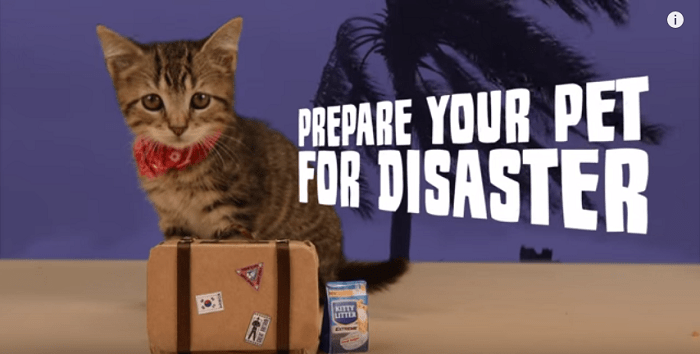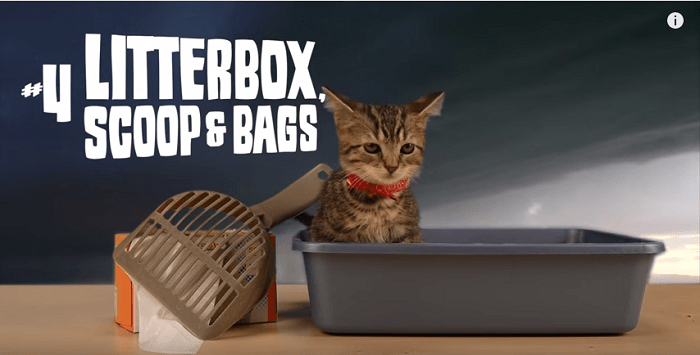Basil the Disaster KITten has a very important message, so he partnered with The Humane Society of the United States (HSUS) to show you how to make sure your pets will be ready for the next natural disaster.

In the event of a disaster, things get crazy quick. You may think you are ready, but if you don’t have a kit, checklist, and a written plan in place, you made find yourself hopelessly unprepared.
Since September is disaster preparedness month, the HSUS want to make sure everyone is prepared so that no pet gets left behind.
Here is the HSUS’ checklist.
#1 -Your PET!
Don’t leave them behind to fend for themselves.
#2- Food and water
For at least five days for each pet, bowls and a manual can opener if you are packing canned pet food. People need at least one gallon of water per person per day. While your pet may not need that much, keep an extra gallon on hand to use if your pet has been exposed to chemicals or flood waters and needs to be rinsed.

#3 – Medications and medical records
Stored in a waterproof container and a first-aid kit. A pet first-aid book is also a good idea.
#4 – Waste Management
Cat litter box, litter, litter scoop and garbage bags to collect all your pets’ waste.

#5 – Sturdy leashes, harnesses and carriers
To transport pets safely and to ensure that your pets can’t escape. Make sure that your cat or dog is wearing a collar and identification that is up to date and visible at all times. Carriers should be large enough to allow your pet to stand comfortably, turn around and lie down. (Your pet may have to stay in the carrier for hours at a time.) Be sure to have a secure cage with no loose objects inside it to accommodate smaller pets—who may also need blankets or towels for bedding and warmth as well as special items, depending on their species.
#6 – Photos
Current photos of you with your pets and descriptions of your pets to help others identify them in case you and your pets become separated—and to prove that they are yours once you’re reunited.
#7 – General Information
Written information about your pets’ feeding schedules, medical conditions and behavior issues along with the name and number of your veterinarian in case you have to board your pets or place them in foster care.
Be sure to put everything in one place, a suitcase or duffel bag is a great location, so it’s easy to grab if something happens.
For more items they recommend, and to download and print a hard copy of their checklist, visit the HSUS’ website.
Now watch Basil as he gives you a full account of the list! This would be a great video to show your kids to help them learn about disaster preparedness as well.
If you don’t have a kit like this one, TODAY is the day to make one! Also, check out and sign the HSUS’ pledge to not leave your pet behind in case of an emergency. Do you think they missed anything on their list? If you have something else in your kit, tell us in the comments.
